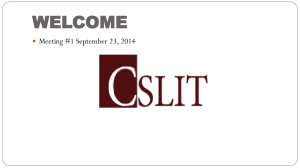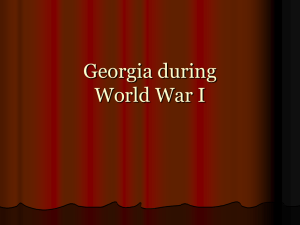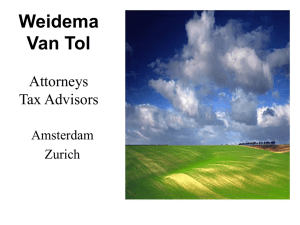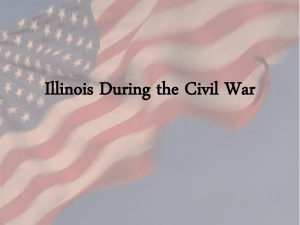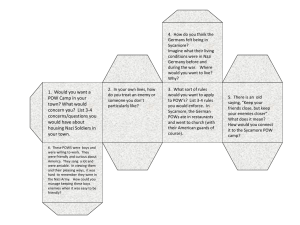Husum-Schwesing Concentration Camp Memorial
advertisement
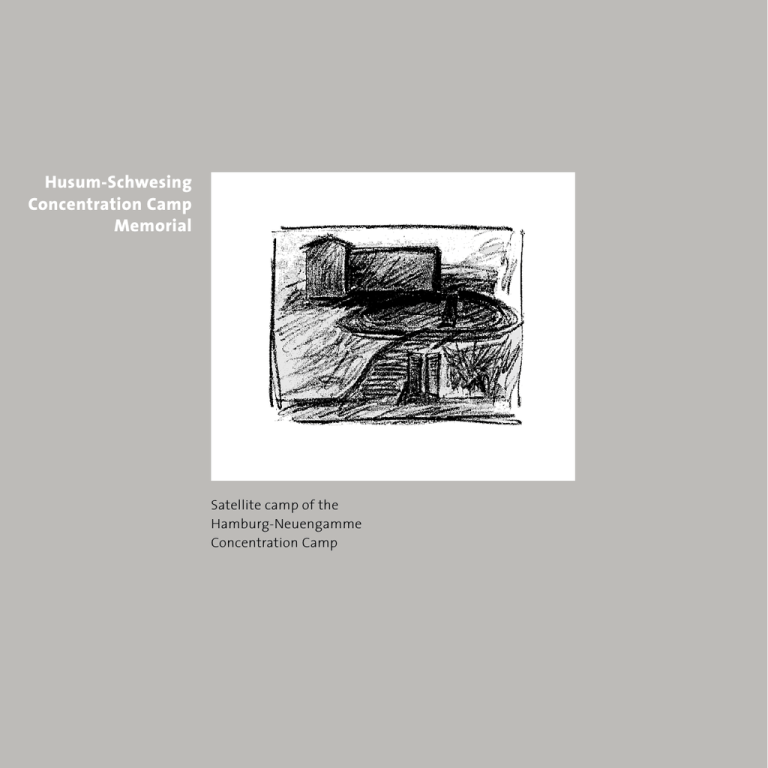
Husum-Schwesing Concentration Camp Memorial Satellite camp of the Hamburg-Neuengamme Concentration Camp The concentration camp Husum-Schwesing British intelligence from 25 December 1944 Husum-Schwesing was one of 87 satellite camps of the central concentration camp Neuengamme which was established in 1938. The Husum-Schwesing camp existed for only 3 months. On 26 September 1944, 1,500 inmates arrived from Neuengamme followed by 1,000 more on October 19. They were all transported by rail in cattle wagons which directly passed the site of the camp. All 2,500 prisoners had to live in huts which were built for 400 people at most. Their living conditions were appalling: malnutrition, hard labour, inadequate clothing, permanent maltreatment, lack of sanitary equipment and medical treatment resulted in a high mortality rate. Although around 1,000 prisoners were taken to another camp in Ladelund on 1 November 1944, the terrible working and hygienic conditions did not improve. In the middle of November there were 734 sick in the camp, suffering from lung and heart diseases, severe diarrhoea, rheumatic fever, diphtheria and tuberculosis. The first transport back to Neuengamme was carried out on 5 December 1944. The camp was ultimately closed on 29 December 1944. The two North Frisian concentration camps, Husum-Schwesing and Ladelund, were built following Hitler’s order of 28 August 1944, to build the “Friesenwall”, a fortification meant to secure the whole North Sea coast against an allied invasion. Several lines of dugouts, bunkers and anti-tank defences were planned along the coast. At the end of October 1944, in North Frisia alone, nearly 25,000 people built the so-called “Friesenwall”, among them many prisoners of war, forced labourers, but also German civilians and soldiers, Hitler Youth, “Arbeitsdienst” men, members of the “Organisation Todt” as well as concentration camp prisoners. They were assigned the task of constructing defense mechanisms and bunkers to defend against the allied troops. The work went on until December 1944. It was not until this date that the camps in Husum-Schwesing and Ladelund were closed down. Most of the prisoners came from the Netherlands, among them were many people from the village of Putten whose male inhabitants had been deported. The Nazis wanted to take revenge for an attack on a German army vehicle which had been bombed by the Dutch resistance. Other groups came from France, Denmark, Anti-tank ditches in the marsh Poland, the Soviet Union and Germany, individual prisoners came from Belgium, Italy, Czechoslovakia, Yugoslavia, Spain, Greece and England. Among them were active members of the resistance, clergymen, officers of the Red Army and people who had been denounced for minor offences. As prisoners, they had to dig anti-tank ditches which were 4-5 metres wide (0.5 metres wide at the base) and 2.5 metres deep. It was hard work moving wet clay while standing up to their hips in cold water. The prisoners worked 10 to 12 hours a day as well as having to walk 10 kilometres to work every day. First they walked, later they were transported in cattle wagons. They had little more to eat than stale bread and thin turnip soup. The wardens abused the prisoners brutally. In the camp itself there were hour-long roll calls which were held on the camp street for want of a better place. There, nobody could escape the cruelty of the camp commander, Hans Griem. The inmates especially dreaded having to sit on a hydrant with outstretched arms and legs. When they fell, they were beaten up by the guards. Many of them died following these beatings. What happened in Husum-Schwesing happened in the public eye. Over a long period of time, the prisoners were driven through Husum every morning and evening. The reactions of witnesses were mixed: there was derision and contempt but also pity. Some people tried to help by slipping the prisoners some food, but few protested and most looked the other way. Camp commander Hans Griem was responsible for the atrocities committed in the concentration camp Husum-Schwesing. On the basis of knowledge acquired to date, 297 people died in the Husum-Schwesing camp. It is difficult to determine the exact number of deaths, as many prisoners died as a result of their detention during the transport back to Neuengamme, or not long after, and these deaths should be added to the number. The bodies were put into paper sacks and dumped in mass graves at the Husum cemetery. After the war many of the dead were exhumed, identified and sent back to their native countries. The survivors of the camp suffered for the rest of their lives. After their liberation, their lives were marked by the psychological and physical consequences of their horrific experiences. The concentration camp was not mentioned in this region for almost 40 years. The huts were used as shelters for Benjamin Mørch, former prisoner, reported in public on 30 January 1983 about the suffering in the camp Paul Thygesen, former camp physician refugees until the late 1950s when they were demolished. Only parts of the kitchen remained. Shortly after the liberation, the British military started investigating the crimes committed at the camp. March 1947 saw the beginning of the trial against camp commander Hans Griem, his deputy Eichler, “Blockführer” Klingler and the “Kapo” Schneider (abbreviation for “Kameradschaftspolizei”) in the Curio Haus in Hamburg. “Kapos” were prisoners who were doing time for crimes and who tormented their fellow prisoners on behalf of the guards. Griem managed to escape from the internment camp in Neuengamme under mysterious circumstances shortly before the trial began. Klingler was sentenced to death, Eichler to five and Schneider to four years imprisonment and the verdicts were enforced. Griem lived undetected in Hamburg until 1963 when charges were once again brought against him. He was, however, not remanded in custody and died before the trial began. The history of the concentration camp was ignored for almost 40 years. The memorial site Former French prisoners visited the camp after 40 years In 1983 the KZ working group Husum-Schwesing published the history of the camp, and a memorial service was hosted there on 30 January 1983, the 50th anniversary of Hitler’s seizure of power. More than 1,000 people came to listen to the shocking and poignant memories of the survivors. The silence was broken at last. In 1985, the Nordfriesland county council acquired the eastern part of the former camp from the federal government. The other part was privately owned; in the meantime a residential building had been built on the historic cellar of the former kitchen block. After lots of controversial discussions the county council decided to erect a memorial on the site of the camp in 1986. On 27 November 1987 the memorial was officially inaugurated in the presence of survivors and their relatives. The memorial building was designed by the working group and sculptor Uli Lindow in consultation with survivors from Denmark, France, the Netherlands and England. Upon entering, you will be struck by the confinement of the room which only offers a view of the sky. A ramp leads the visitor to a narrow, barred window through which a concrete model of the camp can be seen. This model fills the entire room. Bit by bit, the outlines of the huts can be identified as if from an aerial photo. The complex view from a seemingly great height shows the distance to the historical reality and the suffering of the prisoners. Visitors can experience the claustrophobia and the threat of violence. However, unlike the prisoners in 1944, they can leave at any time. In 1994, further parts of the camp were acquired and listed on which the remains of the foundations of the kitchen block and the infamous hydrant are to be found. In 2000/2001 the field of stelae was created by Uli Lindow. The names of the 297 known victims have been engraved into the stelae. The material used is a special type of steel covered with a layer of rust. The names of the dead were deliberately not engraved deeply, so that rust covers them. It takes an effort to decipher them, just as it is a constant effort to keep the memory of the NS history alive. The apparent random arrangement of the stelae is meant to indicate the arbitrariness of the murder and randomness of death in the camp. In 2007 the council acquired the former kitchen block and held a symposium on the further development of the concentration camp memorial. As a result the county council approved the addition of documentary material to the artistic design in 2009. For this purpose a building is to be built on the site to house an exhibition on the history and rise of the Nazi Party (NSDAP) in North Friesland, the history of the Husum-Schwesing concentration camp and the post-war history of the Nazi regime in Schleswig-Holstein. A feasibility study is to be carried out. In 2012 the residential building which had later been built on the kitchen block was removed, the historic cellar was stabilized and the memorial building was refurbished. In 2013 explanatory plaques were erected for the various exhibits as well as a 15-part steel plaque bearing the names of the dead. Accessible pathways were constructed. Chronology 1938/39 The erection of a camp for not more than 400 men who were employed in the construction of the Husum-Schwesing airfield. 25 September 1944 Satellite camp of the Hamburg-Neuengamme concentration camp. 1,500 prisoners are transported from Neuengamme by railway in cattle wagons and put to work building anti-tank ditches (“Friesenwall”). 19 October 1944 The arrival of a further 1,000 prisoners from Neuengamme. There follows an increase in the number of deaths from starvation, excessive hard labour, emaciation, illness and corporal punishment. 1 November 1944 Approximately 1,000 prisoners are moved from Husum-Schwesing to the satellite camp of Ladelund. 29 December 1944 Due to the change in the military situation, the “Friesenwall” is redundant. Husum-Schwesing is closed, the surviving prisoners are taken back to Neuengamme. 297 prisoners were murdered in this place, further victims died as a direct result of their detention in this camp. Post 1945 Partially used as a refugee camp. 30 January 1983 On the 50th anniversary of Hitler’s seizure of power, former prisoners come to Husum at the invitation of the “concentration camp working group Husum-Schwesing” to recount what they suffered in the concentration camp. 1985 Acquisition of part of the camp grounds by the North Frisian county council 1987 Erection of the memorial. Construction of the monument. 1994 Acquisition of a further part of the grounds with remains of the foundation and the hydrant which are put under a preservation order. 1998 Installation of a multilingual information panel in the parking lot. 2000 The historic camp street is exposed. 2001/2002 Construction of the field of stelae. 2007 Acquisition of the former kitchen block which in the interim has been rebuilt as a residential house. 2012 Demolition of the non-historic part of the kitchen block and stabilising of the cellar. Refurbishment of the memorial building. 2013 Addition to the documentation in the form of a sign showing the names, nationality and personal details of those murdered as well as an explanatory plaque for the historic exhibits and works of art. Construction of an accessible pathway to the site. Husum-Schwesing Concentration Camp Memorial Sponsor Stiftung Nordfriesland Schloss vor Husum König-Friedrich-V.-Allee D-25813 Husum Telephone +494841-89730 Telefax +494841-8973111 E-Mail stiftung@nordfriesland.de Member of ”Landesarbeitsgemeinschaft Gedenkstätten und Erinnerungsorte in Schleswig-Holstein” Member of ”Bürgerstiftung Schleswig-Holsteinische Gedenkstätten”, www.gedenkstaetten-sh.de A list containing the complete record of those prisoners who died in the Husum-Schwesing camp can be seen in the internet: www.kz-gedenkstaette-husumschwesing.de Approach from Husum From the town centre, take the main road 200 in the direction of Flensburg. After about 4 km, turn off the right towards Schwesing (Signpost: Gedenkstätte); 100 m on the right is a parking area with information panel. Text: KZ-Working group Husum-Schwesing, Perke Heldt, Husum Translation: Ciara Colgan-Buchenau Design: Rainer Kühnast, Husum Cover illustration by Ulrich Lindow, Schobüll Photos: Archive KZ-Working group Husum-Schwesing Archive Jörn-Peter Leppien, Flensburg Rainer Künast, Husum District archive Nordfriesland Printing: Lempfert, Bredstedt The publication of this brochure was made possible by: NOSPA Kulturstiftung Nordfriesland Johannes und Irene Thordsen Stiftung Bürgerstiftung Schleswig-Holsteinische Gedenkstätten Stiftung Vermächtnis Johan van Wouwer Killed at camp Husum-Schwesing : Wilhelm Hendrik Abersson Christiaan Adams Tamme Afman Hendrik van Akkeren Eduard Alberts Pieter Ammerlaan Leendert Arlmann Pierre Arnaud Fier van Asch Josef Ascherl Poul Erik Astrup Lucien Augel Johan Averbeek Reintje Bakker Jacobus van Balen Teunis van Barneveld Andre van Beaumont Antoni van der Beerenkamp Johannes Beijk Willem Benkelman Laurens van der Berge Yves Berre Valerio Bertocchi Armand Bescond Jan Bischop Pierre Blanchet Bernardus van den Bleek Egbertus Josef Blom Cornelis de Boer Jan A. C. van Boeijen Jan Bokma Arend Bonen Lucas Bongers Frederik Bonnekamp Dirk Boonstra Johannes Borsje Louis Bourrat Jan Evert Hendrik Boven Martinus den Braber Cornelis Brand Melis van den Brink Jan van den Brink Peter J. van den Brink Bernard den Broeke Gerrit Broekhuis Jan Brons Joseph van de Bruin Hendrikus Bruinekool Dirk Brusse Albert Bruun Martin Buurmans Klaas Bartel van de Burgt Augustinus Captyn Alphonse Chataignier André Chudt Antonius Cleizen Johannes Clemens André Coquet Johannes Claus Cordes Anton van Dalen Lobbert van Dam Sven Davidsen Pieter Dekkinga Jan Derksen Pieter Dijk Coenraad Dijkstra Jentje Dijkstra Geert Dik Hendrikus Ditzel Jan Willem H. M. Dols Pieter Doorn Joop van Driest Hendrik van Driesten Arie Ducaat Joseph Dumont Louis Echampard Johannes van El Aaldrik Elringa Johannes Eikenhout Johannes Elferink Hendrikus Erlings Dirk C. van Essen Dirk van Essen Lammert van Essen Jacob Fienstra Theo Fienstra Cornelis Felins August Albert Fischbach Adrianus Fontaine Christian Fries Isaak van Gelderen Jan Gerrit Gaston Gillet Alexander Gindulin Simon Girod Godefriedus van Gog Gijsbert de Groot Jacobus de Groot Reinier P. Grotenhuis Theodorus de Haan Dirk Hagendoorn Antonius van Hal Theunis Hardenberg Carel-Mari Haverman Petrus Heemskerk Sikke Heerlijn Witold Heimowski Egbert Hein Bartholomeus Hendrik Jan Hendriks Josephus-Antonius Hennekam Cornelius Herwich Jan Willem Heyink Nicolaas van Heyningen Anton Hiddink Gerhard Hillen George Hindriks Johannes van Hoevelaak Richard van t‘ Hof Wilhelmus van t‘ Hof Christiaan Hoffmann Antoon Holkenborg Harrie Holtkes Cornelis Homburg Derk Hommes Josephus Hooftmann Pancras van Hoorn Harm Horstede Josef van Hout Egbert Johan van Houttum Arnoldus Huibers Anton Huisman Petrus Huitema Hendrikus Iking Jean Iwens Cornelis Jacobs Charles Jansen Cornelis Jansen Johannes Jansen Gerrit Jarigsma George Jaspar Knud Jensen Albert Gerrit de Jong Henricus Jurissen Alexej Jurtschenko Francizek Kapral Adriaan Kartee Rudolf Ernst Kaul Jan Keijzers Gysbertus Kemp Dirk Kerkhof Hendrikus Kerkhoff Johannes Hendrikus Kirkels Nicolaus Kivits Martinus Klaassen Jan van Klink Nicolay Klynjuk Gerard Klijnhout Jan Knik Martin Koch Pieter Koning Willem Koopmann Matwej Kowalenko Cornelis van de Kraatz Hendrikus Krenzen Iwan Krewiak Julian Kukla Wassilij Kuschtsch Guerino Lavina Eugène Lecoq Noël Le Gac Job Leene Robert Lelièvre Marinus van Leeuwen Martinus van Leyden Hendrikus van Lith Antonius Logtenberg Bertus Lubbertsen Wijnand Luitjes Antonil Maas Johannes Marcelissen Hendrik van Marle Antonius van Meel Peter van Meerveld Jan Meesters Jan Mensink Albertus van der Mey Arthur Miana Klaas Middeljans Hendrik Mijerink Simon Mollette Kurt-Georg Müller Hendrikus ten Napel Zdyslaw Nasalik Wilhelm Nellemose Knud Nordentoft Hendrik van Oel Gerrit van der Oever Johannes Oosterwijk Klaas Oostindie Gerard Ovenweg Albert Christian Pauls Marius Petrou Jozef Philippaerts Geurt Pieper Cornelis Pijper Gerrit Pijper Alphons Plokars Jan Pol Tjerk Pol Jacob Ponstra Johannes Prins Piet Prins Arie Pronk Jan Raas Antonius Raats Nico Rakers Willem Cornelis Ratering Jacob van der Ree Theo Repkes Jan Reznicek Marcel Rigal Jan Arend Roelof Klaus Rönholt Gerardus Roeten Leon Roland Jacobus Roos Wijte de Roos Josephus Rootlieb Aage Buhl Rosenkjær Ariën Ruitenbeek Albert Ruitenbeek Theodorus van Schie Martinus Schoenmakers Johannes Scholtemeyer Jan Geert Schoots Steven Schreuder Hendrik Seldewijk Antoine Serre Jørgen Simoni Johan Slot Gerrit Jan Sluiter Willem Smit Cornelis Snel Johannes Snijders Cornelis Sombeeck Jacobus van der Spiegel Jan Spin Spiridione Sepic Hendrik van Steeg Jan Stefaniak Huibert Stoof Jacobus Suiding Leendert Tanis Willem Tegchelaar Johannes Gerardus Tesselaar Mattheus Timmermans Lucas Touber Jan Arend Roelof Trip Anton Uelen August Vanhellemont Hendrik van Veen Stouke Veenema Hendrik Vegelin Cornelis Verkerk Cornelis Vermaas Horst Adolf Victor Jacob van Vlieth Aart Voogel Jan Vos Peter de Vos Adrianus Vunzen Klaas Weijl Henricus Wilhelmus Cornelis van Werkhoven Hendrik Westervoorde Jan Westra Martinus Wetsteijn Ferdinandus van der Wiel Johannes van Wieren Liuve Wiersma Johannes Harmen Wijnstroot Abram Wijnveen Thomas Willems A. de Wilt Frank van Woersem Matthijs Wulffele Joseph Wymientowski Leendert van Zandbergen Albertus van der Zanden Pieter Zanhugh Tadeusz Zawadzki Jacobus Zuyddyk Paul Zumpolle Johannes van Zwanenburg Reinier Zwanepol Gerrit Zwols Jan Zych
